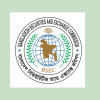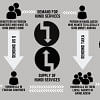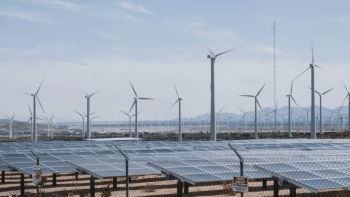Talk of the town: falling forex reserve

If we are serious about the declining trend of the forex reserve, we should take the illicit financial flow seriously. If we do, then the adoption of valuation determination modalities for both inbound and outbound products cannot be any big challenge
In the wake of a foreign currency crisis in the country three recent steps of the government that drew wide appreciation are the travel restrictions for government officials (Finance Division, May 12), lifting of source declaration requirement for over Tk 5 lakh remittance (Bangladesh Bank, May 23) and imposition of additional duty on 68 various importable items (National Board of Revenue, May 24). While we fashionably go against the government on every possible issue on social media, these three rather attracted profuse praise with the first one, cessation of foreign tours, causing hysteria.
Whether or not our government admits that there is a predicament looming large was a talked-about issue in the mainstream media till the point these circulars were issued. With these actions, combined with the Bangladesh Bank guidelines on US dollar price adjustments, the volatile market is expected to be steady soon. We will have Eid-ul-Azha on July 10. Around $3 billion of inward remittance is expected to land between now and then. It would be worth remembering that we experienced a jump in remittance flow after the initiation of a 2.5 per cent incentive in August of 2019. The May 23 circular has further eased the process and the impact awaits the truncated gap between official and unofficial exchange rates.
At 50 years, Bangladesh has entered an era of high growth, low inflation, rising income levels and falling poverty rate. Our forex reserve has also gone up and up in recent past. At the closure of FY2018-19 it was less than $30 billion. A year after, in June 2020, it was $36 billion which turned to $46 billion in June 2021 and $42 billion last week. The mass outcry for forex reserve, something we have never seen, lies here. It has gone $4 billion lower than that last year and $6 billion than that of August 2021. Based on this frail frame, an easy, out of context comparison with the fate of Sri Lanka got instant popularity resulting in people panicking. The panic is a big contributor to the crisis generated in April. But it is bound to go in June.
How the tale of Sri Lanka is gravely dissimilar to ours is vividly discussed in this newspaper by in-house reporters and guest columnists. Hence, we will spare the details of the castaway Hambantota port, the catastrophic organic farming, the careless tax cuts, the Covid stricken tourism industry, and the conundrum of debt servicing. Better, we try and find a solid explanation for the fall from $48 billion, a peak we could never put our feet on before or after August 2021.
Our import cost has seen a formidable 46 per cent rise in recent months. Russia's war on Ukraine, the never-seen-ever shipping costs since mid-2021, the surging energy prices, the pent-up demand of commodities and services, all have their fair share in inflating import payments. That there would be more than the usual volume of import payments in a post pandemic world was predictable but the war on Ukraine is toying with all predictions.
What could the government have done to combat the crises? Well, in short term perspective it has acted exactly in the way it should have - cap the fancy tours, pamper the remitters and create entry barriers for non-essential goods. Also, multi-agency efforts to scale up export and attract FDI has been set in motion. Presumably the government's medium-term actions are coming up in budget proposals. One such programme is to bring back illicit money that crossed borders, make it legitimate through taxation and raise reserves. The scheme was launched in FY 2020-21 with a flat rate of tax but failed to produce any fruitful results. Perhaps the legislation will make another attempt in an upgraded version. On top of it, here we add a point to ponder for medium and long-term action, to reign in further flight of capital.
The Bombshell GFI Report
That money moves fraudulently through over invoicing of export and under invoicing of import worldwide is public knowledge. We are no exception to that. But there was no general agreement on how much money indeed cross borders this way till the Global Financial Integrity, a Washington based think tank, in 2008 first published its groundbreaking report on illicit flow of money. Today, after 14 years of coming into being, the GFI report is read and respected all over the world.
In their recent release, the GFI has estimated for us that a total of $49.65 billion has been overstated through falsified invoicing in 6 years between 2009 and 2018. The average for these reported years is $8.27 billion, multiply it with 10 to cover all 10 years, again multiply it with a flat rate of Tk 85. The total stands at an astounding Tk 7 lakh crore!
These numbers are not based on perception, rather they are extracted from concrete reports. As a member nation we report our trade numbers annually to United Nations. The GFI matched these numbers with the destination country data in case of export and country of origin in case of import, summed up the differential and reached at this robust size.
We must be convinced that the GFI does not produce a perception index. It plays with real life numbers and that too in highly acclaimed ways. If we are serious about the declining trend of the forex reserve, we should take the illicit financial flow seriously. If we do, then the adoption of valuation determination modalities for both inbound and outbound products cannot be any big challenge.
The Admirable Indian Story
In 1990 the Reserve Bank of India had a reserve that could cover only 4.8 weeks of Indian import. In 2004 it reached the $100 billion mark for the first time. Today, with $600 billion ($597.51 on May 20) in the exchequer it can comfortably cover 18 months of import.
India has also climbed to the 4th position in the global table of reserves only after China, Japan and Switzerland.
How did they do it?
Perhaps we can dig a bit deeper into their fiscal and monetary policies and gain some takeways.
The author is a member of the Pacific Council on International Policy and a former commercial counselor at the Los Angeles Consulate. He can be reached at [email protected]. The views expressed in this article are personal.

 For all latest news, follow The Daily Star's Google News channel.
For all latest news, follow The Daily Star's Google News channel. 








Comments